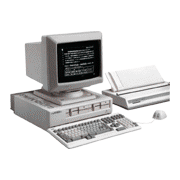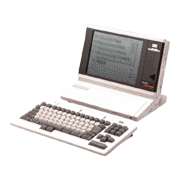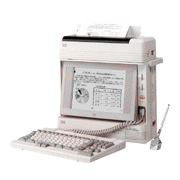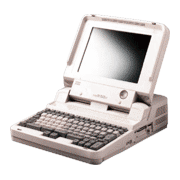Three models -- the FM R-60, R-50 and R-30 -- were announced in January 1987 as the successors of Fujitsu's FM16β (Beta) business PC. The FM R-60 was a high-end model about 30% faster than the previous FM16βFD. It employed 1,120x750dot high-resolution graphics, and had 24-dot kanji (Japanese character) display capability. The FM R-50 was a high cost-performance model with the same performance as the FM R-60 and 640x480dot graphics. The FM R-30 was a space-saving model which incorporated a 640x480dot large display and a 3.5-inch floppy disk drive in a compact body with a unique "inverted T" design. The previous FM16β(Beta) had high-level hardware, with high-speed and outstanding functionality. However, due to a delay in support for MS-DOS, there was a lack of available software. Therefore, in the FM R Series, MS-DOS was adopted as a standard feature, and the system was developed as a true business computer. This series had the following features (the R in "FM R Series" stood for "Refresh" and "Revolution")
- The series followed 8086 CPU, and merged into the MS-DOS
- It allowed selection to suit user requirements by providing a hardware series (FM R-30/50/60 -- 3 models and 6 types)
- Uniform Japanese input (OASYS kana-kanji conversion function)
- Provided FM-OASYS for achieving integration with the OASYS Series of Japanese word processors
- Equipped with a wide range of communication functions, such as host connection, PC communication and LAN capability
- A full line of hardware and software needed for use as a business PC
Later, the FM R-70, a model equipped with the 32-bit 80386 CPU was added for enhanced performance. Other models were also commercialized: the space-saving transportable FM R-30BX (1987) and FM R-30HX (weight approx. 9kg, 1988), and the laptop FM R-10LT (battery drive with continue use time of 1-4 hours, weight 5kg, 1988) and FM R-50LT (FM R-50 compatible, laptop PC with plasma display, weight approx. 7.6/7.5kg, 1988). The FM R Series was Fujitsu's flagship business PC until the appearance of the AT compatible FM-V in 1993. The specifications of the FM-R Series were publicly disclosed, and the Panacom M Series was commercialized by Matsushita Electric.
| FM R-30 (FD,HD) |
FM R-50 (FD,HD) |
FM R-60 (FD,HD) |
FM R-70 (HD) |
FM R-30HX | FM R-50LT (LT5/LT2) |
||
|---|---|---|---|---|---|---|---|
| Type | Space- saving desktop | Desktop | Transpor- table | Laptop | |||
| Annou- ncement date |
January 1987 | Sept- ember 1987 |
1988 | 1988 | |||
| CPU | 80C86 (8MHz) |
80286 (8MHz) |
80386 (16MHz) |
80L286 (8MHz) |
80286 (8MHz) |
||
| Numerical operation processor (Optional) | - | 80287 (8MHz) |
80387 (16MHz) |
- | - | ||
| RAM | Main memory | 0.5-1MB | 1-5MB | 2-10MB | 0.5-1MB | 1-3MB | |
| Graphic VRAM | 128KB | 256KB | 512KB | 128KB | 256KB | ||
| Dis- play |
Device | Built-in LCD | CRT | Built-in LCD (black and white) | Plasma display: Monoc- hrome, 16- gradation display |
||
| Japa- nese display |
40 characters x 25/20 lines (16 dots) | 40 characters x 25 lines (16 dots) | 40 characters x 25 lines (24 dots) | 40 characters x 25/20 lines (16 dots) | |||
| Graphics | 640x400 dots | 640x400 dots | 1120x750 dots | 640x400 dots | 640x400 dots | ||
| 16 colors designated from 4096 colors | |||||||
| Kanji ROM | JIS level 1 kanji, JIS level 2 kanji, JIS non-kanji, user stored 188 types, standard | ||||||
| Built-in floppy disk | 3.5inch 1MBx2 | 5inch1MBx2 | 3.5inch 1MBx2 | 3.5inch 1MBx1/2 | |||
| Built-in hard disk | 20MBx1 (HD type only) | 40MBx1 | 20MBx1 | 20MBx1/0 | |||
| Main software | MS-DOS V3.1‚ CF-BASIC86 HG‚ CFM-OASYS | That at left + -Japanese MS OS/2 -Kanji XENIX |
MS-DOS V3.1‚ CF-BASIC86 HG‚ CFM-OASYS | ||||





